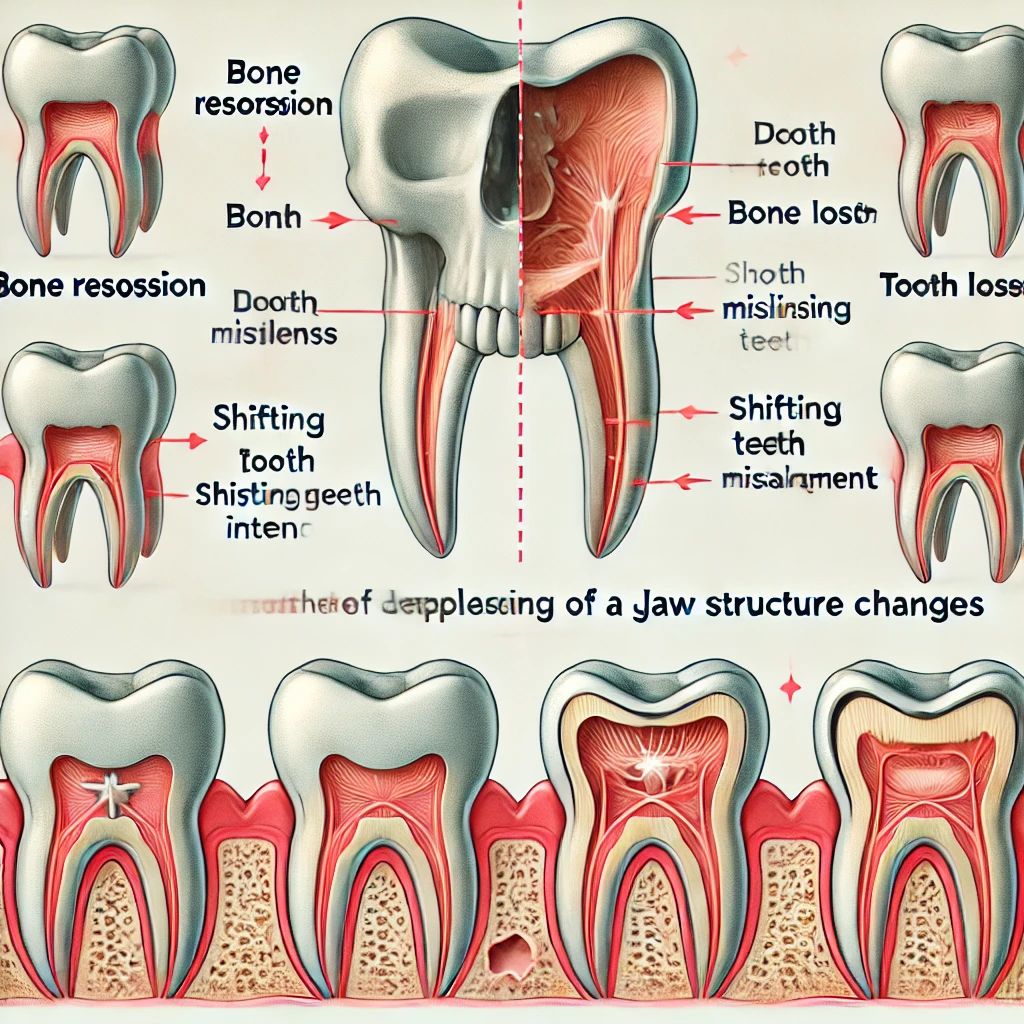Having a tooth pulled can be a necessary dental procedure, but many people wonder: “What happens if you have a tooth pulled and don’t replace it?” While leaving the gap might not seem like a big deal at first, it can have significant consequences for your oral health, appearance, and overall well-being over time. Let’s explore the potential risks and why replacing a missing tooth is often recommended.
Immediate Effects of Not Replacing a Pulled Tooth
- Gap in Your Smile
A missing tooth is immediately noticeable, especially if it’s a front tooth. This can affect your confidence and willingness to smile. - Chewing Challenges
Missing a tooth can make chewing certain foods more difficult. This might lead you to avoid healthy but hard-to-chew foods like nuts, fruits, or vegetables.
Long-Term Consequences of Not Replacing a Missing Tooth
- Bone Loss (Alveolar Bone Resorption)
When a tooth is removed, the jawbone in that area no longer receives stimulation from the tooth root. Over time, the bone begins to shrink, a process known as bone resorption.- Impact: This can lead to a weaker jaw and changes in facial structure, such as a sunken appearance.
- Shifting of Surrounding Teeth
Neighboring teeth may begin to shift into the empty space, causing:- Misalignment of your bite (malocclusion).
- Increased risk of tooth decay or gum disease, as misaligned teeth are harder to clean.
- Increased Risk of Gum Issues
The gap left by the missing tooth can become a trap for food particles and bacteria, leading to gum irritation or infection. - Additional Tooth Loss
Teeth rely on each other for support. When one is missing, the surrounding teeth take on extra pressure, increasing their likelihood of wear, damage, or even loss. - Difficulty Speaking
Missing teeth, particularly front ones, can affect pronunciation, leading to speech difficulties. - Jaw Pain or TMJ Issues
Changes in bite alignment due to missing teeth can stress the temporomandibular joint (TMJ), potentially causing jaw pain or headaches.
Why Replacing a Missing Tooth Is Important
Replacing a missing tooth can prevent these long-term issues and improve both functionality and aesthetics. Options for tooth replacement include:
- Dental Implants
- Description: A titanium post is surgically placed into the jawbone, acting as an artificial root, topped with a crown for a natural look.
- Benefits: Prevents bone loss and maintains alignment. Long-lasting and durable.
- Dental Bridges
- Description: A false tooth is anchored to the adjacent teeth using crowns.
- Benefits: Restores chewing ability and appearance without surgery.
- Dentures
- Description: Removable prosthetics that replace one or multiple missing teeth.
- Benefits: Affordable and versatile, though less stable than implants.
FAQs About Missing Teeth
1. Is it okay to leave a missing tooth if it’s in the back?
Even a missing back tooth can lead to bone loss, shifting teeth, and alignment problems. Replacing it is still recommended to maintain oral health.
2. How soon should I replace a missing tooth?
It’s best to consult your dentist as soon as possible. The longer you wait, the more bone loss may occur, making replacement options like implants more challenging.
3. Are dental implants worth the cost?
Yes, dental implants are a long-term solution that prevents bone loss, preserves jaw health, and functions like a natural tooth.
4. Can a missing tooth affect overall health?
Yes, missing teeth can impact nutrition due to chewing difficulties, as well as lead to jawbone deterioration and misalignment, which can affect overall well-being.
Final Thoughts
So, what happens if you have a tooth pulled and don’t replace it? The short answer is that it can lead to bone loss, shifting teeth, gum issues, and other complications over time. While it may seem like a minor issue, leaving a gap can negatively impact your oral health, appearance, and quality of life.
If you’ve had a tooth extracted, consult your dentist about the best replacement options. Taking proactive steps now can save you from more extensive treatments later.
